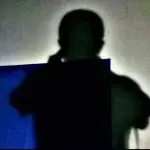"A sci-fi that is not so sci-fi"—this was one of the reasons I listed The Eternaut as my most anticipated adaptation this year. After its release on Netflix, I began watching with very low expectations, repeatedly telling myself not to compare it to the original comic. After all, the original was published in 1957. Indeed, the opening impressed me—the director faithfully recreated the original plot and setting while transplanting them into our current era. Who wouldn't want to see a classic story retold in our time? Within 10 minutes into the series, I could no longer contain my excitement and quickly messaged my friend: "Amazing! Amazing! This must be the most successful sci-fi adaptation!" However, as I continued watching, I gradually began to question this previous statement…

Hello, Peliplaters!
The first episode of The Eternaut was brilliant. In the prologue, we saw a young girl lying in a sailboat cabin, gazing at the stars. Moments later, her friends died one after another, and she noticed a snowflake falling outside the window. The prologue ended there, leaving viewers with haunting questions: What was the girl thinking while staring at the stars? What killed her friends? Will she survive? Before we could contemplate these mysteries further, we witnessed an intense street protest. Angry citizens lit bonfires, blocked roads, chanted slogans, and banged on pots. After the camera found the protagonist Juan Salvo, the sounds of protest ebbed and flowed. Even as Juan returned home and argued with his friend, the protest sounds continued to echo. This unusual opening suggested that the adaptation might surpass the original.
Though I later changed my perspective, my initial assessment had merit. The original version of The Eternaut is a comic book containing no onomatopoeia. Using sound creatively marked a breakthrough innovation, and numerous compelling scenes in the first episode proved this wasn't just a random artistic choice. Director Bruno Stagnaro had clearly studied the original thoroughly and carefully planned how to craft a successful adaptation. Yet from the second episode onward, the production quality declined sharply. Stagnaro's sound design became mundane, and both the character development and plot progression deviated from the promising direction set by the opening episode.
You might ask why I'm dwelling on Stagnaro's approach to sound. In 2025, isn't sound simply a given for television? But what I'm really concerned about is the story's coherence—and the treatment of sound isn't merely an innovation inspired by the original work, but rather a vital component of this adaptation.
While the original work contains no onomatopoeia, it still creates vivid "sounds" in the reader's mind. The narrative is told almost entirely through the Eternaut's monologue, with only a tiny fraction showing author Héctor Germán Oesterheld's comic avatar clarifying his role as merely the story's narrator. One quiet night, the Eternaut appeared at his desk and, after politely asking about the time and location, shared his complete story. Instead of alerting the authorities or turning away this unexpected visitor, the author found himself captivated by the tale and resolved to publish it as a warning to humanity about an impending catastrophic threat.
Oesterheld likely chose to omit onomatopoeia for practical reasons. After all, you can't actually hear sounds in someone's verbal account, and it'd have seemed unrealistic for a narrator to imitate battle noises while recounting combat scenes.
The thing is that Oesterheld could have simply omitted this narrative framework. For readers, it made little difference whether the story was narrated by the Eternaut or unfolded naturally in the form of comic illustrations. Furthermore, the absence of onomatopoeia limited the author's expressive range and presented unnecessary challenges. He couldn't use voice-overs to shift perspectives quickly and had to rely on characters to describe crucial sound changes instead. Yet what did this sacrifice achieve? It created perfect synchronization between the attention of the author, readers, and characters. All creatures that hear are inherently alert to sounds, and unexpected noises inevitably capture our attention. In the comic, where sounds could only be made by the characters, we were limited to knowing exactly what they knew. This, combined with clever suspense and carefully placed obstacles, made every character's utterance an essential clue that resonated deeply with readers.
What was the most mysterious and terrifying element in the entire book? It was neither the beetle creatures from the TV series nor the half-revealed alien in the final episode—it was the invisible colonial power orchestrating the invasion. This colonizer possessed the ability to control other species. Any new alien intelligence could be the true invader, or merely another pawn. When the author's, readers', and characters' attention were perfectly aligned, no one knew the invader's true identity—they only knew they must prepare for an even greater threat ahead.
Through the Eternaut's and his voices, Oesterheld sincerely showed readers how humanity can subdue an overwhelmingly powerful enemy. Like us, he couldn't envision what preparations could possibly counter a vastly superior civilization. Instead, he simply depicted characters who, regardless of circumstances, refused to surrender to their invaders.
Oesterheld's storytelling created truly unforgettable characters. Each person he crafted remains vivid in my memory—their experiences and journeys. I remember how the Eternaut evolved from a timid, ordinary man into a hero who remained fearless despite being lost in eternal time. I remember his companions: the brilliant but pessimistic professor, the bold worker who never hesitated to charge forward, and the proud commander with a selfless heart. I even remember the alien who appeared only briefly, eager to join their fight against the colonizers, yet died before uttering a single word. These characters stay with me not because I have an excellent memory, but because forgetting them would feel like a genuine loss.
The horror Oesterheld created in the book was unnervingly real. When the deadly snowfall descended, the world lost all its familiar sounds—after an initial burst of crashing vehicles, there was only absolute silence. Living in cities, we're accustomed to constant noise outside our windows but imagine if all those sounds suddenly vanished. Whether you panic or try to stay strong, the world you once knew is gone forever. I fear such a scenario, and every character in the book showed me how I should face it.
Speaking of Stagnaro, his adaptation wasn't careless but rather thoughtful. While keeping the alien elements largely intact, he added fresh ideas to the characters, plot, and story background. The changes to the characters' ages, appearances, and personalities didn't detract from the original work, as it was always meant to be a civilian-focused, anti-heroic ensemble piece. Regarding the plot and setting, Stagnaro understood that as long as he maintained the two core premises—the deadly snow and the unseen alien colonizers—the story's location and specific details wouldn't make the adaptation feel disconnected. He deserves credit for successfully transforming a 1957 novel into a story that modern audiences can readily connect with.
However, Stagnaro's excessive ambition led to changes in the original work that were merely different rather than meaningful.
While Stagnaro's characters felt authentic, they suffered from an unyielding stubbornness. Oesterheld's characters were stubborn too, but throughout the plot, deep self-reflection on their limitations was demonstrated physically by themselves or verbally by others. These reflections gave readers room to think beyond the author's narrative instead of being trapped by the characters' flaws. In contrast, Stagnaro's characters remained rigid and unchanging. They rarely acknowledged humans' weaknesses or considered alternative perspectives. Though these differences might seem minor, consider this: In a real doomsday scenario, would you want to survive alongside such inflexible people? I know I wouldn't.
In terms of plot development, Stagnaro's narrative lacked coherence and seemed to lose focus quickly. In the first episode, he introduced two significant plot points—the great blackout and the mass protests—but abandoned them in subsequent episodes. A blackout of such magnitude would realistically trigger widespread panic and send citizens scrambling to stockpile supplies. Yet inexplicably, the main characters only grasped the importance of supplies after disaster struck. Similarly, the protest movement featured dedicated core members with strong organizational ties and operational experience. These activists would likely have quickly united into a formidable group during a crisis. Instead, they inexplicably disappeared in later episodes. Even if the deadly snowfall claimed their lives, their established influence and networks shouldn't have vanished without a trace.
The Eternaut stands out as different but falls short of being the best adaptation. While its creation and achievements deserve recognition, we shouldn't settle for mere distinctiveness.
What do you think, Peliplaters?






































View replies 1
View replies 1
View replies 0